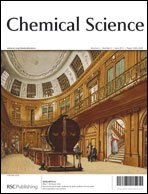We synthesized a series of Ru(II) metal complexes TFRS-1, -2, -4, -21, -22 and -24 with a single 4,4′-dicarboxylic acid-2,2′-bipyridine together with two functionalized pyridyl azolate ancillary ligands consisting of pyrazolate or triazolate groups. Both photophysical measurements and DFT/TDDFT calculations were conducted to gain insight into their electronic and optical properties. The triazolate series of sensitizers TFRS-21, -22 and -24 showed an enlarged optical band gap with respect to their pyrazolate counterparts TFRS-1, -2 and -4. When employed in dye sensitized solar cells (DSCs), the triazolate sensitizers show slightly inferior JSC values due to the poor incident photon-to-current conversion efficiencies recorded compared to the pyrazolate series. Moreover, the endowed 5-(hexylthio)thiophen-2-yl substituents exert a notable hyperchromic effect and bathochromic shift in the absorption spectra, which then improves the short circuit current JSC to 18.7 and 15.5 mA cm−2 and the overall conversion efficiency to η = 10.2% and 8.25% for TFRS-4 and TFRS-24, respectively. For the evaluation of VOC, transient photocurrent and photovoltage decay measurements were carried out to compare the rates of interfacial recombination of electrons from the TiO2 conduction band to electrolyte.

You have access to this article
 Please wait while we load your content...
Something went wrong. Try again?
Please wait while we load your content...
Something went wrong. Try again?


 Please wait while we load your content...
Please wait while we load your content...